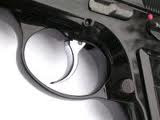What I'm reading: An Invitation to Sin, by Jo Beverley, Sally Mackenzie, Vanessa Kelly & Katilin O'Riley; Island Nights, by P.J. Mellor
Only 5 more likes and 12 more followers before I give away more books. And don't forget to sign up for my newsletter on my website, which also enters you in the giveaway. Details on the Deals and Steals tab.
Today it's another recap of an Emerald City Writers Conference workshop, this one given by Bernadette Pajer. She called her approach "Trigger Writing" and she made some interesting points, giving another way to look at the "show don't tell" rule.
Pajer defined a trigger as a carefully crafted description, rich in innuendo or emotional responses. She said the beauty of triggers is that they engage readers by allowing them to be an active participant in the story.
When you use triggers, you're using implications and connotations rather than denotations, or strict definitions of the words. You're trusting that the reader will have the same associations with the word that you're trying to get across in your prose.
For example, if you put a Dumpster in a scene, odds are your readers are going to see and smell the scene, even if you don't go into details about what it actually looks like or smells like.
How much description do you need? Here, Pajer recommends that you go into a lot of detail only when the details are important to showing intense conflict or emotion—the big scenes the reader has been anticipating. Otherwise, a few triggers can ground the reader without slowing the pace. You're tapping into their experiences, memories, and emotions. They will bring these into play as they read without being pulled out of the story.
For example, using the Dumpster example: If it's just there to set the scene, simply calling it a Dumpster should be enough for the reader. But if the Dumpster is important to your story—perhaps your character is going to have to climb into it in order to find a lost object, or a clue to a crime, then you'll want to spend more time, elaborating, and adding more triggers. Is it outside a restaurant, overflowing with drippy, slimy trash bags filled with rotten food?
The challenge, Pajer pointed out, is that you as the author have to find the balance between what you're going to provide and what you're going to trust the reader to understand on their own.
Some of her checkpoints:
1. Does the detail slow the action? Here, you'll want only essential trigger words.
2. Does the description simply add atmosphere or serve as a transition? Again, cut and watch the pacing.
3. Does the description add new, vital information? You can get away with more descriptions here.
4. Is it a key scene? Have you built to this scene so your reader is anticipating the reveal? Here, slow down, flesh out details, and immerse the reader in the moment.
The bottom line? You have to engage your reader. The cover of my NOOK color has a quote from Samuel Johnson: "A writer only begins a book. A reader finishes it."
Tomorrow, Mark Danielson is a returning guest. He's talking about finding inspiration.
Like this post? Please share by clicking one of the links below.


Great post. Thanks for sharing.
ReplyDeleteGreat topics you've been covering, Terry. Thanks.
ReplyDeleteVery interesting, Terry. Some excellent points were made.
ReplyDeleteYes. How many triggers/extended detail can you have when you also have a tight word count to work to. That's a balance, as a newbie author,that I'm finding pretty challenging.
ReplyDeleteGlad you're finding the post helpful.
ReplyDeleteNancy - I think triggers can help tighten your word count when they're simple words or phrases that evoke a lot of images without adding words. That might leave you more space for your longer descriptions when you need them.
Thanks for sharing this great information Terry! Always a good reminder to keep that writing tight and essential because sometimes we, as writers, get carried away with either putting in to much detail or not enough.
ReplyDeleteGreat reminder to pay attention to pacing in our writing. Thanks Terry.
ReplyDeleteMore good stuff. Thanks for sharing, Terry
ReplyDeleteCalisa, Mackenzie - thanks for stopping by. Glad there was something useful to you.
ReplyDeleteChristine - it's all about balance, isn't it?
ReplyDelete